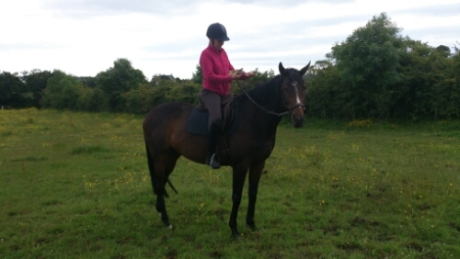Thirty years ago, dog training relied heavily on the use of aversive stimuli such as choke chains. Nowadays, training involves toys, food and praise, motivating dogs to perform through joy rather than fear. Around the same time, the cane and all forms of corporal punishment were banned in schools, and nowadays young children learn predominantly through play and rewards. Dogs and humans are not unique in how they experience emotions and how they learn.
Regardless of the species, a good trainer can make effective and ethical use of rewards to motivate excellent performance, without having to rely heavily on aversive stimuli. This includes horses!
Forget everything you’ve been told about it not being possible to train horses with food. With a good understanding of learning theory and equine ethology, you can tailor the training to suit the needs of your individual horse, and you really can train your horse to do anything!
More importantly, our growing understanding of neuroscience and welfare indicates not only that we can train horses this way, but that we should. To better understand why, attend this fascinating two day workshop with Dr Helen Spence.
This workshop will be of interest whether you are a competitive rider or a happy hacker. The tools you will learn can be used to help the spookiest horse grow in confidence, the laziest horse become more enthusiastic, and with skillful use can help develop technique to the highest level in both jumping and dressage.
Over the two days you will learn about :
Learning theory, emotion and motivation and how they apply to horses
How to identify aversive and appetitive stimuli and the impact they have on the horse
Horse behaviour and communication including the finer details of body language
The use of marker signals such as a clicker
How to create and shape behaviour from start to finish
Putting responses on cue
An introduction to fears and phobias and how best to deal with them (explaining habituation, flooding and systematic desensitisation and counter conditioning)
A tried and tested format for teaching foundation behaviours
The workshop is being hosted by Nicky Mummery in Mountmellick, Co. Laois. Cost for the two days is €100. For a more detailed programme and to book your place, please contact Nicky by email riderbiomechanics@gmail.com or Helen info@helenspencehorsesense.co.uk or ring Helen on +447773 157428 or ring Nicky on +353876232754
The workshop will be presented by Dr Helen Spence. A leading expert in equine behaviour and training, Helen has a psychology degree and a PhD on the influence of owner personality and attitudes on the behaviour and temperament of the domestic horse. In business since 2003 as an equine behaviour and training consultant, she has specialised in reward based training since 1999. Over the past decade she has taught learning theory and horse behaviour to everyone from happy hackers to veterinary surgeons, including a stint teaching psychology at Queen’s University Belfast. For a number of years she taught the equine component of the MSc in Companion Animal Behaviour Counselling at Southampton University, one of the best respected courses of it’s type, and she currently contributes to the animal behaviour training delivered to the veterinary students at Liverpool University. Helen has been described as a bit of a ‘rare breed’- someone with academic qualifications and teaching experience who has extensive practical knowledge and works day in, day out, with horses and their owners/ trainers in the real world. For further information about Helen and her work, visit http://www.helenspencehorsesense.co.uk


